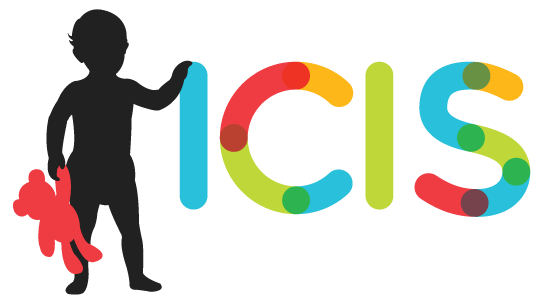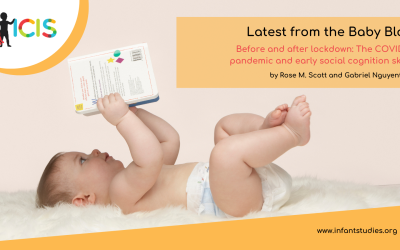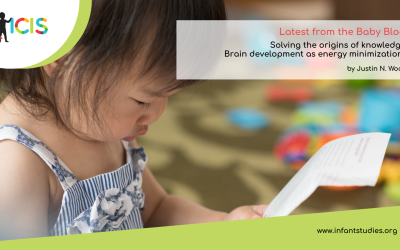by Ron Seifer
Most of us in ICIS conduct basic behavioral research. Many of us aspire to see our research have impact beyond the community of those who read reports in scientific journals. Becoming effective in translating research into practice and/or policy requires a complex set of skills that are not necessarily the same as the ones required to be effective in conducting basic research studies. Furthermore, most of us receive virtually no training in these translation skills during graduate or postdoctoral training.
So, what are these critical translation skills and how does one acquire them? What are the mistakes to avoid? In the sections that follow, I will enumerate some actions that would support broadening the impact of your work. I’ll also discuss some personal experiences that inform these suggestions.
Avoid the Modal Academician Approach. More often than not, academic researchers hold up their most recent study and say (forcefully) “SEE!” followed by directives of what parents, childcare providers, politicians, and others outside the research community should do. This appeal reflects a naïve view of how systems actually function in the real world. In my own work on risk and adversity, for example, I’ve been tempted (and have sometimes acted) to simply tell others who might have some influence that it is imperative that they work, above all other responsibilities, to ameliorate a particular contextual factor associated with poorer developmental outcomes (e.g., economic access to health care early in life). This approach is overly simplistic, with little appreciation of the drivers, constraints, and motivations for change.
Self-Reflect. Once you suppress the impulse to simply broadcast your latest work, the first step is to conduct a critical evaluation of whether your specific study or program of research provides useful information regarding practice in real-world settings. Should the findings be considered by those who have input to creation of public policy? More often than not, the answer to this question is “NO”. One can either stop at this point and go back to being a good basic researcher, or perhaps, one might try some of the things that follow.
Embed Your Work in the Larger Body of Science. Any individual study or individual program of research is only as good as what has come before and what will follow. A corollary of this point is that the full meaning of any individual’s work relies on the work of others asking related questions. The power of behavioral science (and all science for that matter) is in the convergence of evidence from multiple points, and it is almost universally the case that those multiple points are generated by multiple research groups. Thus, move beyond centering on one piece of evidence and provide a richer context for the work.
Design Your Research with Practice and Policy Considerations in Mind. As scientists, we have been trained on how to ask the next relevant question in a particular domain when designing a study. We consider less often which questions might be most valuable in the practice and policy context. These questions are not in opposition but are, in fact complimentary. It is often the case that making small measurement adjustments to a study can greatly enhance the utility of the findings. In some of my own work examining mechanisms of resilience in the context of severe early adversity, adding some information about additional contextual factors (e.g., behavioral health treatment, social services) to the usual social-demographic, behavioral, and biological measures has contributed substantially to practice and policy discussions.
Identify What Specific Impact is Intended. Too often, the presumed impact is to make the world a better place for infants and young children. We all want this generic outcome, but the real question is what has been learned from the science (basic and applied) that might affect a specific set of activities that occur in everyday life. It is certainly useful to consider how the lessons from a research program fit into larger agendas, but a key to having impact is to keep the messages to things that audiences can legitimately act upon.
Identify Your Audience(s). The key question here is: Who might be able to implement the intended actions to achieve the desired impact? Some of the usual suspects are government actors (legislature, courts, executive departments), community partners, philanthropic funders, non-profit advocates; business community; and individual community members. More often than not, effective action requires coordination among multiple audiences, all of whom need to be working from a common ground.
Develop Generic Communication Skills and Tailor to a Specific Audience. One basic crafting tool is to tell a story in plain language about the research inquiry process (What’s the puzzle? How did you/others solve the puzzle? What did the solved puzzle tell us? What did the solved puzzle not reveal?) Such stories can set the stage for the crucial discussion: What are the reasonable options we can pursue now? As with most other writing and communication tasks, less is more. Academia often violates this principle. One slide is better than 15 slides. One graphic is better than a series of 10 graphics. Get to the point quickly, give a modest amount of additional background, and close by re-emphasizing the key take-home message. Leave statistics and complex data jargon at home.
Cultivate Relationships. What relationships do you cultivate? One strategy is to start with where the money resides. The longtime TV executive Don Ohlmeyer is famously quoted, “the answer to all your questions is: money.” This is no different in the realm of practices and policies relevant to children and families. Thus, when identifying relationships to cultivate, begin with the money, which typically resides in some governmental entity, and fan out from there. Most obviously, people in government who control the allocation (legislators) and expenditure (executive branch) of resources are a place to begin, but these people have many others besides you knocking at their door. A next level out includes those who have already cultivated relationships with government. There are more community organizations than you can imagine (some of whom are sympathetic with your agenda) and many would be excited to work with you to accomplish common goals. And don’t forget your academic colleagues and professional organizations, as some of them may already be in influential positions where you hope to occupy a space. If you are (like me) more on the introverted side, work against your impulses and get out there to build these relationships. If you’re one of these extroverts, use all of those qualities to make these contacts. Ultimately, you want to build the network that will provide you the opportunities to express your views in places that matter.
Help Others Get Their Jobs Done. All of us who work in any profession need to meet goals and expectations. Policymakers, and others who influence policymakers, are no different. There are often small things you can do that will help them enormously in their daily work. These include things like providing background information useful for a group meeting they might have, providing information about current evidence for the worth (or not) of particular programs, helping with a data processing issue, helping them to do their own networking, and so on. A small amount of work on your part goes a long way toward building trust, good will, and respect.
Learn How to Move From Talk to Action. As academic researchers, we are all good at ideas and talking about those ideas—this is at the heart of our graduate training and job descriptions. As we step into policy and practice settings, our academic skill set is not necessarily well-matched with this translational agenda. Compounding this, the translational activities typically occur in partnership with others who are stepping out of their workplace comfort zones. Thus, a convenient fallback is to get stuck at the discussion of attractive ideas without the structures to convert those good ideas into meaningful actions. Much can be learned from the relatively new disciplines of implementation science and implementation practice. These disciplines are explicitly concerned with understanding the conditions under which actions are strategically chosen, successfully implemented, and sustained over time. There are many valuable lessons for basic behavioral researchers in these increasingly sophisticated and evidence-based implementation approaches.
Understand the Intricacies of Moving a Basic Behavioral Finding to Intervention to Scaling of the Intervention. An intriguing research finding rarely suggests a direct way to have impact on the mechanism of action relevant to that finding. In my own work (along with the work of many others) the association of a constellation of sensitive/responsive parenting practices with children’s emotional competence has been well established (alongside continuing questions regarding cultural embeddedness of these findings). Over the years, many have attempted to move the needle in supporting families in this domain. Several approaches have demonstrated efficacy, but effect sizes tend to be small and not all families benefit. Furthermore, the ability to bring effective programs to scale is a daunting enterprise, where hard fought dissemination gains are difficult to sustain. In the context of things that work (but with small effects and less than universal benefit) it is tempting to over-promise to policymakers what benefits might accrue given the resources that might be needed to modify current practice. It is important to understand and convey these limitations so that your partners are not disappointed after long and difficult practice improvements.
Be Humble. In all of these endeavors, applying a global mindset of humility is important as well. As with all social encounters, those where you might be pursuing practice or policy goals require optimal social skills. Among those skills is to avoid being the smartest person in the room (even if you are). As academic researchers, our job is to create and accumulate knowledge. But our stores of knowledge tend to be restricted to things that occur in relatively controlled settings—most practice and policy considerations are applied in messy uncontrolled settings. Thus, it is important to realize that your partners bring to the table complementary stores of knowledge that are just as critical as your own. In similar fashion, when tasks are being assigned, have the humility to declare—to yourself and to others—those things that you are ill-suited to take on, and leave those tasks to the experts.
Be Patient. Effective translation takes a long, long time to accomplish. Most of the things you set out to do will fail on the first or second or third attempt. Opportunities to be “in the room” are serendipitous. Sometimes you might set out to be included in a particular group and succeed; but just as often you will not gain admittance and other times invitations to participate will come out of the blue. Inclusion in various working groups might not seem relevant to your specific goals, but participation in these types of interactions provide the opportunities to do all of the things described above (cultivate relationships, help others get their jobs done, etc.). In my own experience, my first sustained encounters with policymakers began with an invitation to serve on a state project’s advisory board. I went into this activity with the mindset of being a good professional citizen, with little expectation that any personal goals would be accomplished. After a decade of such meetings, the credibility I built up with these policymakers led to active contributions to direction of programming and use of federal/state funds, to inclusion in development of new projects, and to funding for my group’s work as it related to practice and policy.
For those of you who have read this to the end, you will notice that I violated virtually all of my stated principles in this blog post. Rather than view this as a bug (and dismiss everything I say), view it as a feature emphasizing the importance of audience and setting when you try to communicate the fruits of your work. Having a one-time opportunity to communicate with academic researchers is vastly different from becoming embedded in practice and policy decision making. Perhaps the most important thing I’ve learned over the years is that what might succeed in one setting will fail miserably in others. In a nutshell—recognize that practice and policy is a unique workspace, requiring the development of augmented skills and adaptation to new contexts. We are all developmental scientists after all.
Some helpful references:
Proctor, E., Silmer, H., Raghavan, R., Hovmand, P., Aarons, G., Bunger, A., Griffey, R., & Hensley, M. (2011). Outcomes for Implementation Research: Conceptual Distinctions, Measurement Challenges, and Research Agenda, Adm Policy Ment Health, 38, 65-76.
Gigerenzer, G. Gaissmaier, W., Kurz-Milcke, E., Schwartz, L. M., & Woloshin, S. (2008). Helping Doctors and Patients Make Sense of Health Statistics. Psychological Science in the Public Interest, 8, 53-96.
National Implementation Research Network at https://nirn.fpg.unc.edu/national-implementation-research-network
FrameWorks Institute at https://www.frameworksinstitute.org/
Blueprints at https://www.blueprintsprograms.org/
Home Visiting Evidence of Effectiveness at https://homvee.acf.hhs.gov/
About the Author

Ron Seifer
The University of North Carolina at Chapel Hil
Ronald Seifer, Ph. D. is Associate Director for Research at the Frank Porter Graham Child Development Institute at The University of North Carolina at Chapel Hill. He is also Adjunct Professor of Psychiatry at Brown University, where he spent 33 years before moving to UNC in 2019. Dr. Seifer’s research is broadly in the area of long-term effects of early adversity in the first years of life, viewed from behavioral, biobehavioral, relationship, and social context perspectives. This work has informed interaction with policymakers at state in local levels as well as policy-informed implementation research employing evidence-based practice.




